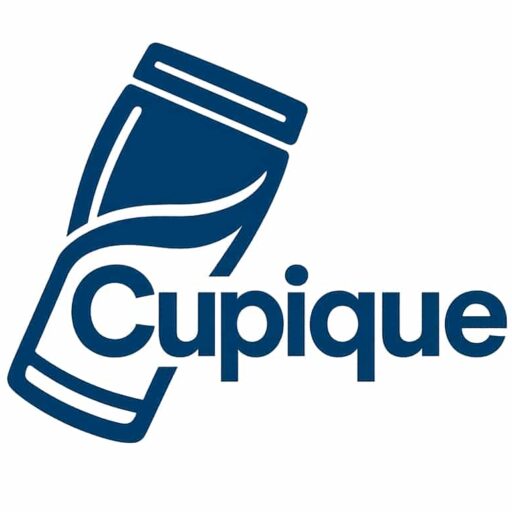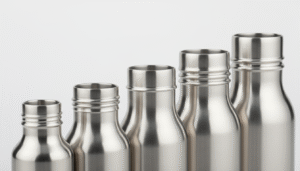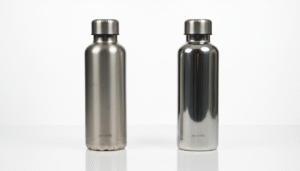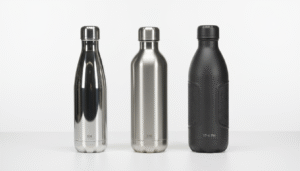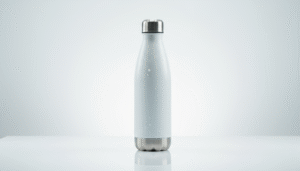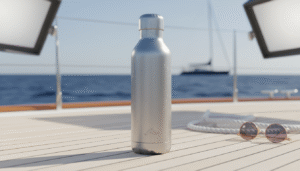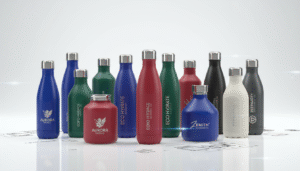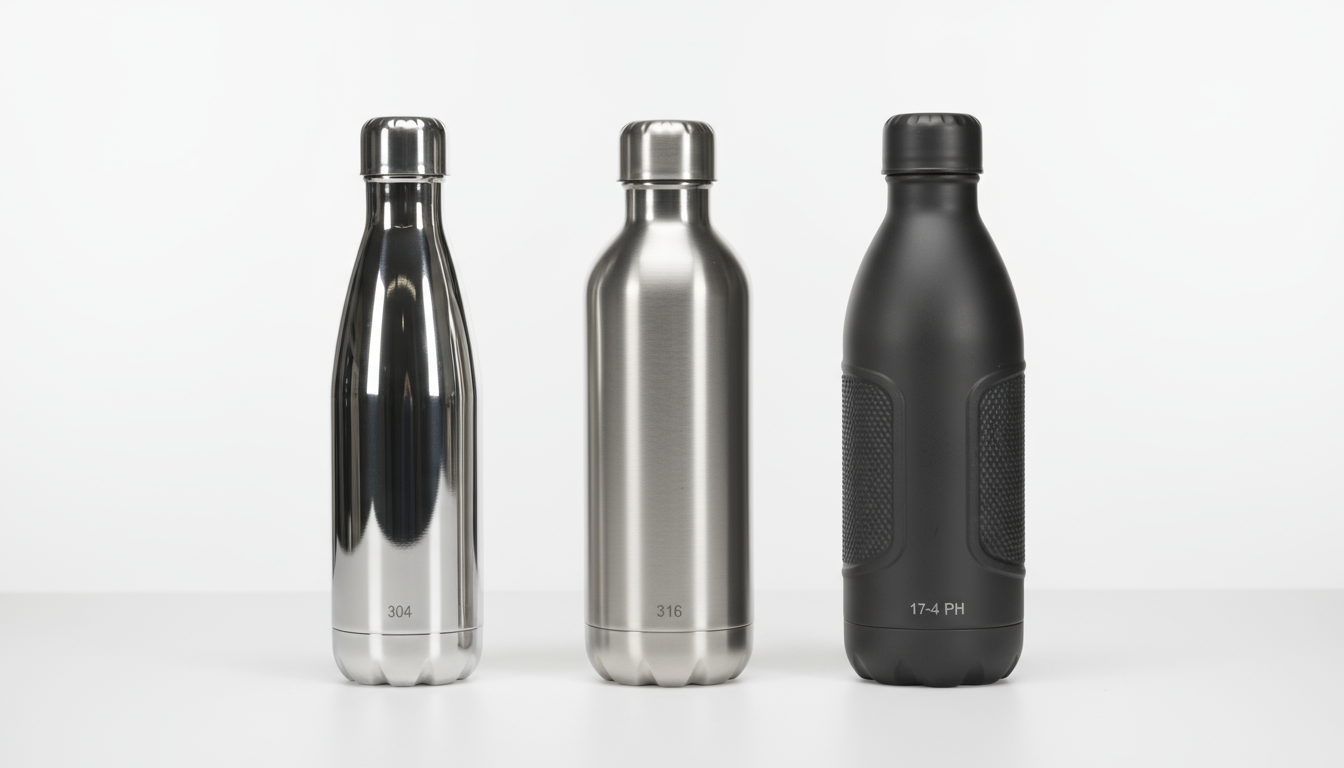
The choice between 304, 316, and 17-4 PH stainless steel comes down to matching performance with application needs. For most B2B water bottle orders, 304 steel delivers full compliance and quality at 20-40% lower cost than 316, while 17-4 PH serves specialized industrial applications requiring extreme strength.
I've seen too many procurement managers struggle with this choice. The marketing around "premium" materials often creates confusion. Let me break down what each grade actually offers for your specific needs.
For most B2B water bottles, 304 stainless steel is a cost-effective and compliant choice.True
The text states 304 steel offers 20-40% lower cost than 316 for most B2B water bottles.
17-4 PH stainless steel is the standard material for most B2B water bottle orders.False
17-4 PH is for specialized industrial applications, not typical B2B water bottle orders.
What Is the Main Difference Between 316 and 304 Stainless Steel?
The core difference lies in molybdenum content. This single element changes everything about cost and performance for your sourcing strategy.
316 stainless steel contains 2-3% molybdenum, giving it superior corrosion resistance in harsh environments. 304 steel lacks molybdenum but offers excellent performance for standard food and beverage applications at significantly lower cost.
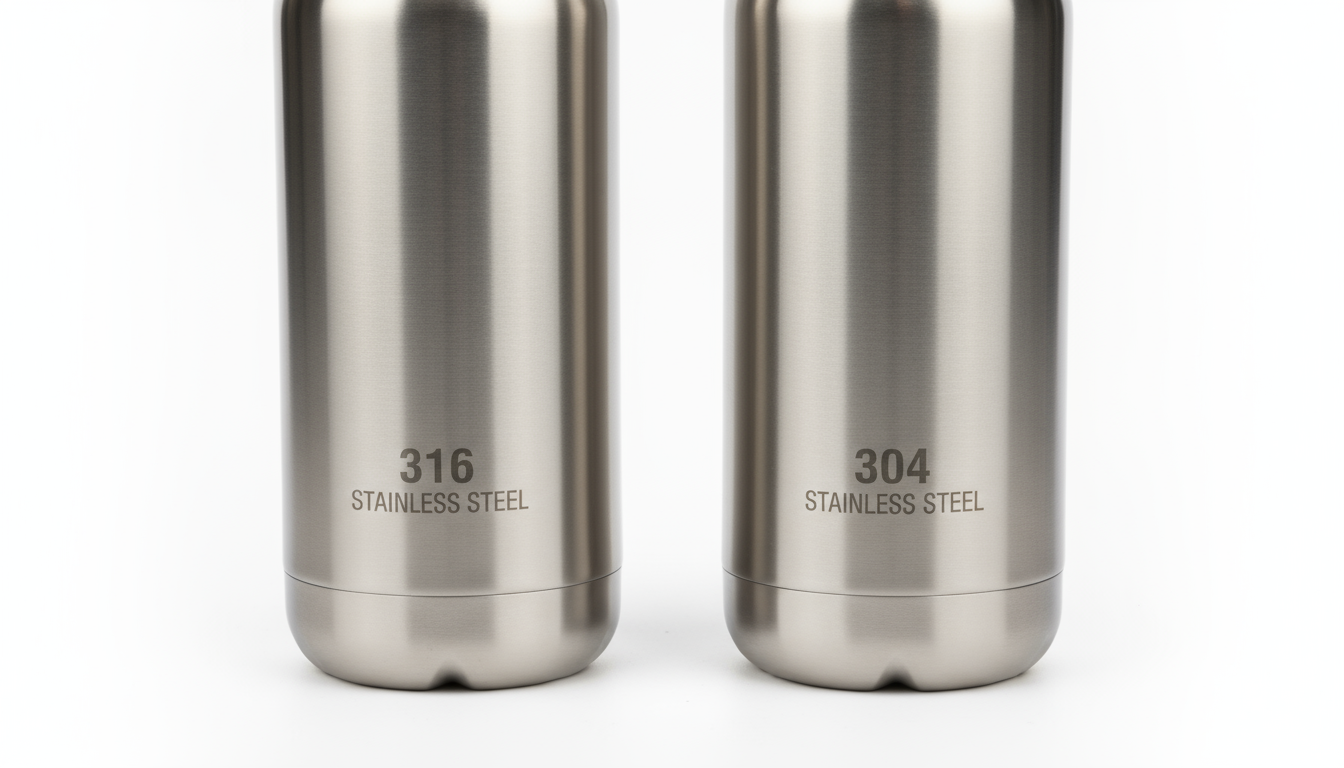
Chemical Composition Breakdown
The composition differences directly impact your procurement costs:
| Element | 304 Steel | 316 Steel | Cost Impact |
|---|---|---|---|
| Chromium | 18-20% | 16-18% | Baseline |
| Nickel | 8-10.5% | 10-14% | Higher nickel = higher cost |
| Molybdenum | 0% | 2-3% | Premium pricing driver |
| Carbon | ≤0.08% | ≤0.08% | No difference |
Performance Characteristics
From my experience working with buyers across different markets, here's what these differences mean in practice:
Corrosion Resistance Levels
- 304 Steel: Excellent for water, coffee, tea, and most beverages
- 316 Steel: Superior resistance to acidic drinks and salt exposure
- Real-world impact: 304 handles 95% of user scenarios perfectly
Temperature Performance
Both grades maintain structural integrity from -40°F to 200°F, covering all practical beverage temperature ranges. I've never encountered a failure related to temperature performance in either grade during normal use.
Manufacturing Considerations
316 steel requires more careful handling during production due to its alloy composition. This translates to longer lead times and higher labor costs, which get passed to you as the buyer.
Molybdenum in 316 steel provides superior corrosion resistance over 304.True
316 steel contains 2-3% molybdenum, giving it superior corrosion resistance.
Both 304 and 316 stainless steels contain molybdenum.False
304 steel lacks molybdenum, which is present only in 316.
Which Stainless Steel Grade Is Best for Food and Beverage Containers?
Your target market determines the optimal choice. I always ask my clients about their end users before making recommendations.
For general consumer markets, 304 stainless steel provides full food safety compliance and excellent performance at the best price point. 316 steel serves premium segments and specialized applications where superior corrosion resistance justifies the cost premium.
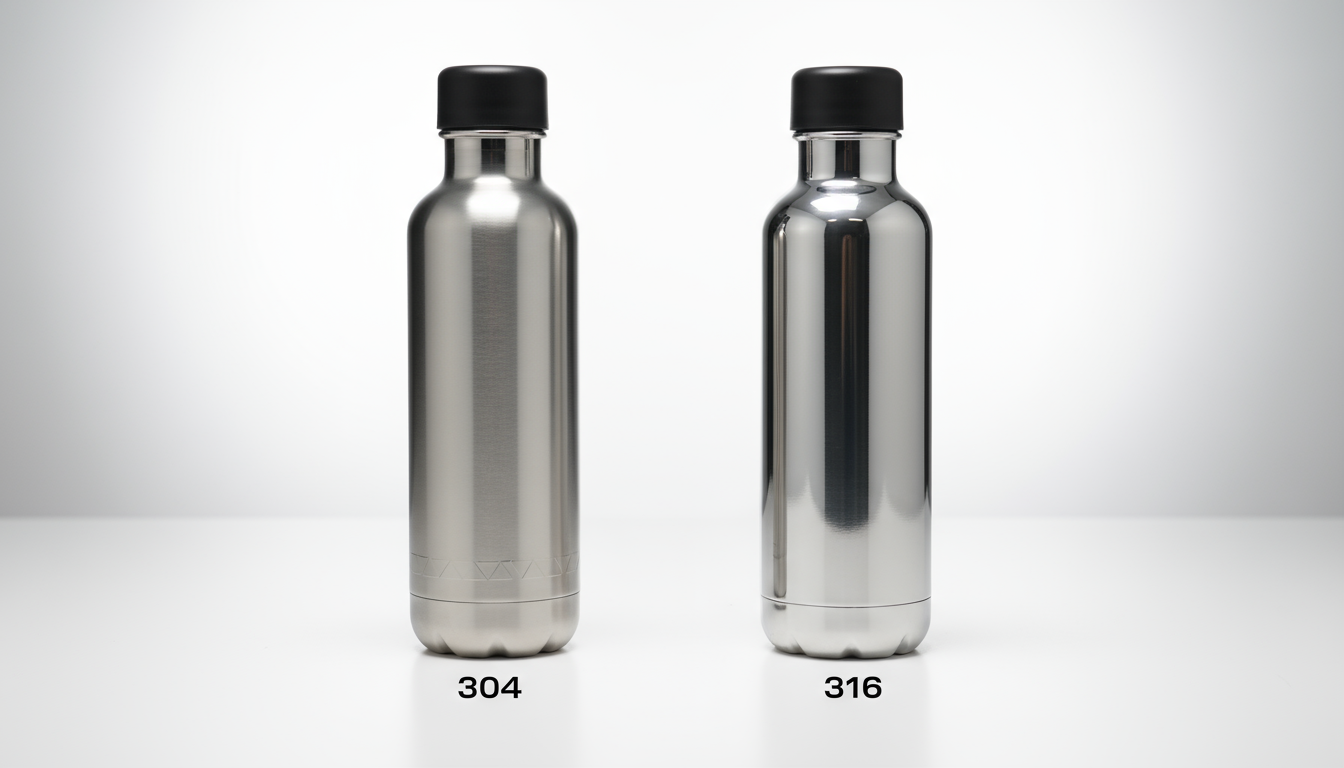
Food Safety Standards Comparison
Both grades meet stringent international requirements:
| Certification | 304 Steel | 316 Steel | Notes |
|---|---|---|---|
| FDA Approved | ✓ | ✓ | Both fully compliant |
| LFGB Certified | ✓ | ✓ | EU food contact standards |
| REACH Compliant | ✓ | ✓ | Chemical safety regulations |
| BPA-Free | ✓ | ✓ | Inherent property of steel |
Market Positioning Strategy
I recommend viewing these grades as a portfolio approach rather than a single choice:
304 Steel Applications
- Corporate gift programs with large quantities
- Mass market retail products
- Budget-conscious consumer segments
- Standard promotional items
316 Steel Applications
- Premium gift lines targeting executives
- Coastal markets with salt air exposure
- Health-conscious consumers seeking "the best"
- Differentiation strategy for crowded markets
Cost-Benefit Analysis
The 20-40% price difference compounds through your entire supply chain1. For a 10,000-unit corporate order, choosing 304 over 316 can save $15,000-25,000 without sacrificing quality or safety for typical office use.
304 stainless steel is ideal for general consumer food containers.True
It offers full compliance, excellent performance, and the best price point for this market.
316 stainless steel is the most cost-effective choice for all food containers.False
The text states 316 has a 'cost premium,' while 304 offers the 'best price point' for general use.
Why Is 316 Stainless Steel Considered Superior for Corrosion Resistance?
The molybdenum content creates a more robust protective oxide layer. This matters for specific environments but may be overkill for your application.
316 stainless steel's molybdenum addition forms superior passive films against chloride attack and acidic conditions. However, for standard beverage use, 304 steel's corrosion resistance exceeds requirements by a wide margin.
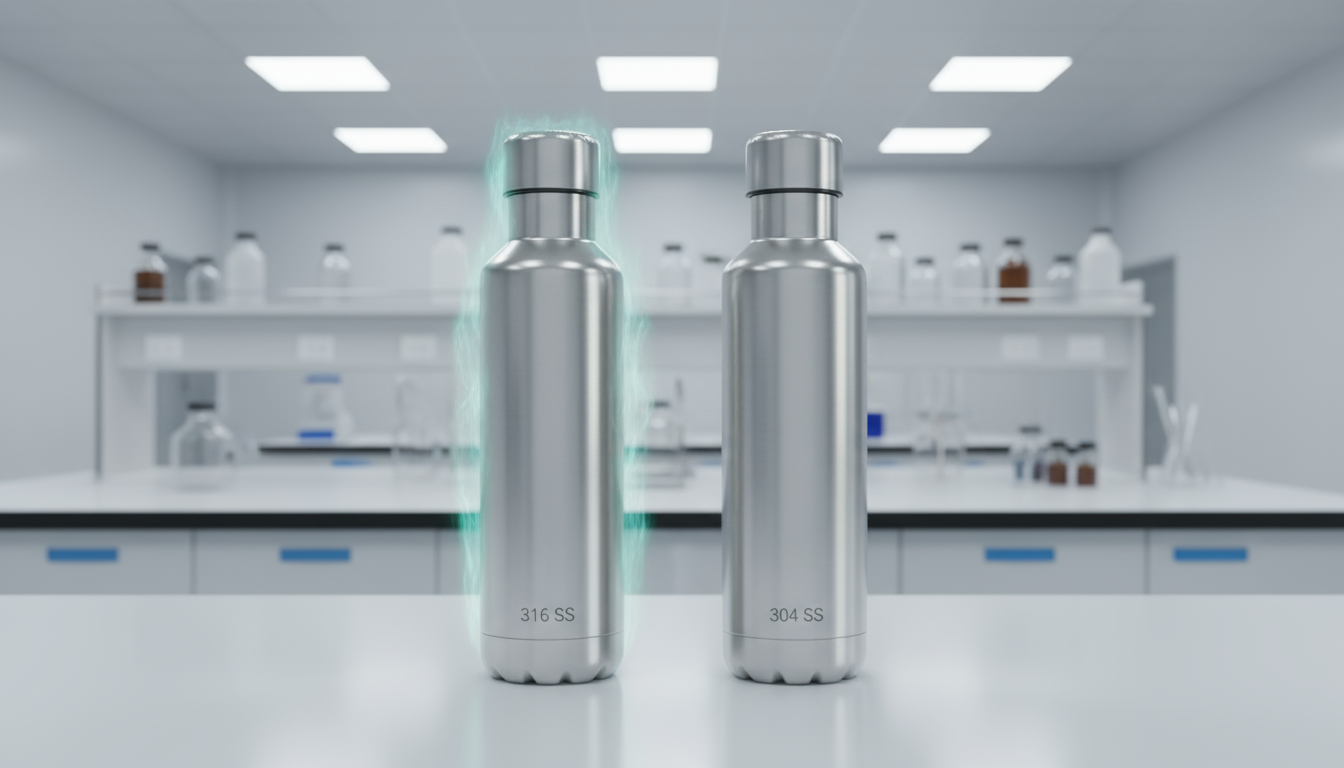
Scientific Basis of Enhanced Resistance
Passive Layer Formation
Molybdenum strengthens the chromium oxide layer that naturally forms on stainless steel surfaces.2This enhanced barrier provides better protection against:
- Chloride ion penetration (salt water, sports drinks)
- Acidic attack (citrus beverages, vitamin drinks)
- Pitting corrosion in marine environments
Practical Performance Differences
| Environment | 304 Performance | 316 Performance | Recommendation |
|---|---|---|---|
| Pure water | Excellent | Excellent | Use 304 |
| Coffee/Tea | Excellent | Excellent | Use 304 |
| Sports drinks | Good | Excellent | Consider 316 |
| Coastal areas | Good | Excellent | Consider 316 |
| Pool/spa areas | Fair | Excellent | Use 316 |
Real-World Testing Results
In my factory's testing lab, we expose samples to various solutions for extended periods. 304 steel shows no degradation after 1000 hours in standard beverage solutions[^9]. 316 steel maintains this performance even in aggressive acidic conditions.
Accelerated Corrosion Testing
We use ASTM G48 testing protocols to simulate years of use:
- 304 steel: Zero pitting in neutral pH solutions
- 316 steel: Zero pitting even in low pH acidic solutions
- Conclusion: Both exceed normal use requirements
The key insight is that 316's superior performance often exceeds what your customers actually need, making it a premium feature rather than a necessity.
Is the Higher Cost of 316 Stainless Steel Justified Over 304 for My Needs?
Cost justification depends entirely on your market positioning and customer requirements. I help clients calculate total value, not just material cost.
For most B2B applications, 316 stainless steel's premium cost is not justified by performance gains over 304. The exception is premium product lines where the cost difference can be passed to customers who value "the best" materials.
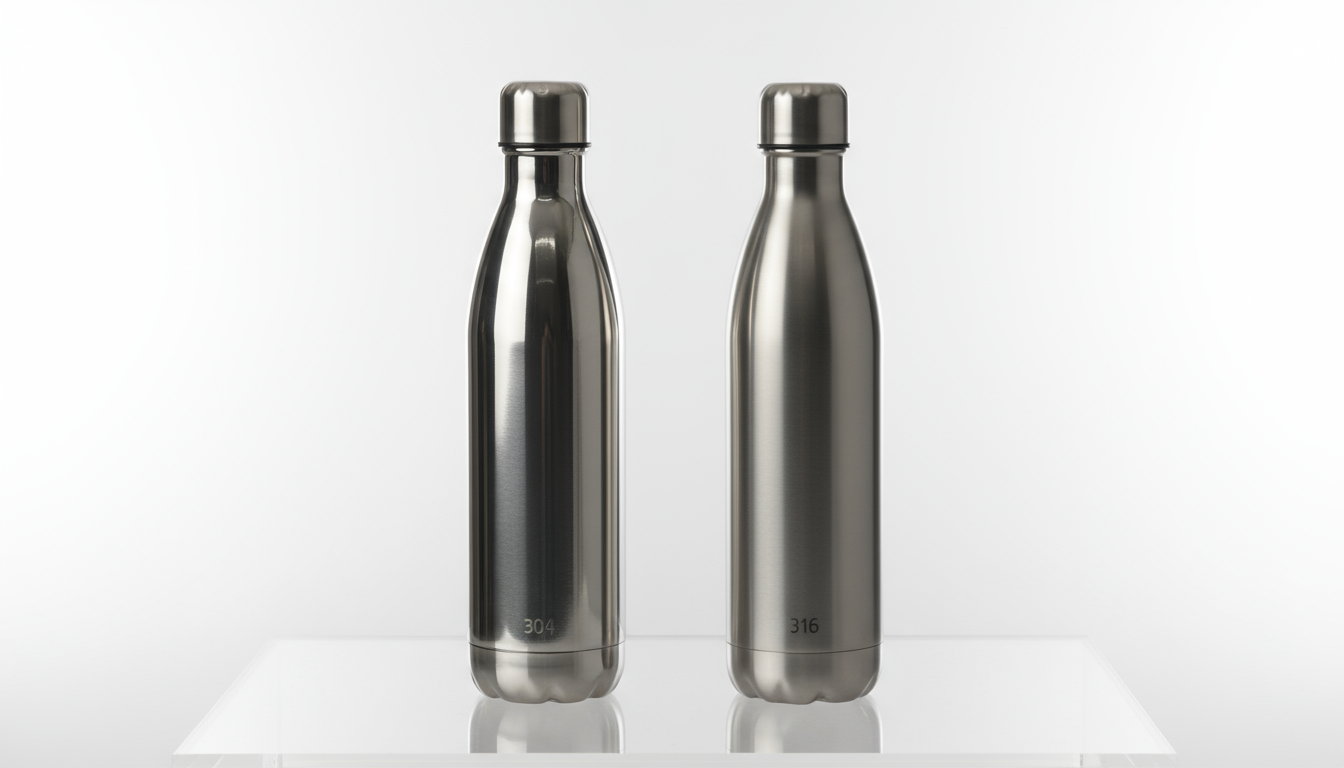
Total Cost of Ownership Analysis
Direct Cost Factors
| Cost Component | 304 Steel | 316 Steel | Difference |
|---|---|---|---|
| Raw material | Baseline | +25-40% | Significant |
| Processing time | Standard | +10-15% | Longer cycles |
| Quality control | Standard | +5-10% | Extra testing |
| Inventory carrying | Lower | Higher | Due to higher value |
Hidden Cost Implications
The material choice affects more than unit cost:
Tariff Impact for US Importers
Current US tariffs on Chinese stainless steel products amplify the cost difference. A 25% material premium becomes a 31-35% final cost increase when tariffs apply to the higher base value.
Minimum Order Quantity Effects
316 steel's higher cost may force you into smaller order quantities, losing volume discounts and increasing per-unit shipping costs.
Strategic Decision Framework
I use this framework with all my B2B clients:
Choose 304 Steel When:
- Order quantities exceed 5,000 units
- Price sensitivity is primary concern
- Standard beverage applications
- Corporate gifts or promotional items
- Mass market retail positioning
Choose 316 Steel When:
- Premium brand positioning is critical
- Coastal or marine environment exposure
- Acidic beverage focus (sports drinks, vitamin waters)
- Luxury gift market targeting
- Differentiation strategy against competitors
ROI Calculation Example
For a 10,000-unit corporate gift program:
- 304 steel option: $45,000 total cost
- 316 steel option: $58,500 total cost
- Savings with 304: $13,500 (23% cost reduction)
This savings can fund additional customization, better packaging, or simply improve program ROI.
For most B2B applications, 316's higher cost isn't justified by performance over 304.True
The snippet states this is true for most B2B applications.
316 stainless steel's higher cost is never justified over 304.False
It can be justified for premium product lines where customers value 'the best' materials.
How Does 17-4 PH Stainless Steel Compare for High-Strength Industrial Applications?
17-4 PH stainless steel serves a completely different market segment. I rarely recommend it for standard water bottles, but it has specific industrial advantages.
17-4 PH stainless steel offers exceptional strength through precipitation hardening but costs significantly more and requires specialized manufacturing. It's best suited for industrial applications requiring extreme durability rather than consumer water bottles.
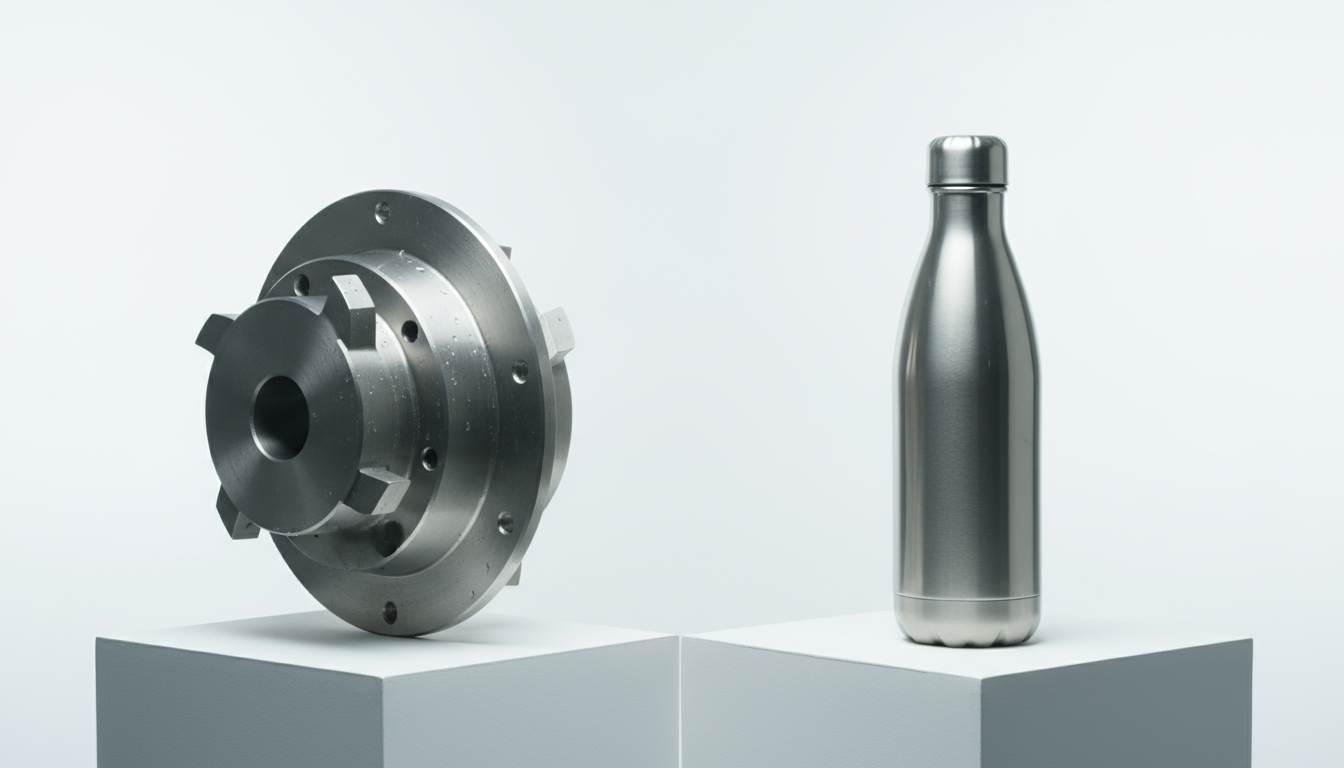
Material Properties Comparison
Mechanical Strength Characteristics
| Property | 304 Steel | 316 Steel | 17-4 PH Steel | Units |
|---|---|---|---|---|
| Tensile Strength | 515-620 | 515-620 | 1000-1300 | MPa |
| Yield Strength | 205-310 | 205-310 | 825-1100 | MPa |
| Hardness | 70-85 | 70-85 | 280-440 | HB |
| Impact Resistance | Good | Good | Excellent | Qualitative |
Manufacturing Considerations
17-4 PH requires heat treatment processes that standard austenitic steels don't need3:
Heat Treatment Requirements
- Solution annealing at 1900°F (1040°C)
- Precipitation hardening at 900-1150°F (480-620°C)
- Controlled cooling cycles
- Post-treatment stress relief
These additional steps increase manufacturing time by 40-60% and require specialized equipment most bottle manufacturers don't have.
Application Suitability Analysis
Where 17-4 PH Excels
- Aerospace components: Extreme stress environments
- Industrial tooling: High-wear applications
- Marine hardware: Combined strength and corrosion resistance
- Specialized equipment: Where failure means safety risks
Why It's Rarely Optimal for Water Bottles
The strength advantages of 17-4 PH far exceed what any beverage container needs. It's like using aircraft-grade aluminum for a food storage container – technically superior but economically wasteful.
Cost-Benefit Reality Check
- Material cost: 3-4x higher than 304 steel
- Manufacturing complexity: Requires specialized facilities
- Lead times: 2-3x longer due to heat treatment
- Performance gain for bottles: Minimal to none
Market Positioning Recommendations
If you're considering 17-4 PH for water bottles, I'd redirect your thinking:
Alternative Strategies
- Use 316 steel for premium positioning without overkill
- Focus on design innovation rather than material extremes
- Invest savings in better insulation or user features
- Target appropriate markets for each material grade
The key insight is matching material capabilities to actual user needs rather than pursuing technical specifications that exceed requirements.
17-4 PH stainless steel offers exceptional strength and durability for industrial applications.True
The text states it offers 'exceptional strength' and is 'best suited for industrial applications'.
17-4 PH stainless steel is a cost-effective material for standard consumer water bottles.False
It costs significantly more and is not recommended for standard water bottles due to cost and specialization.
Conclusion
Choose 304 steel for cost-effective B2B sourcing, 316 for premium positioning, and save 17-4 PH for true industrial applications. Smart material selection directly impacts your sourcing success.
